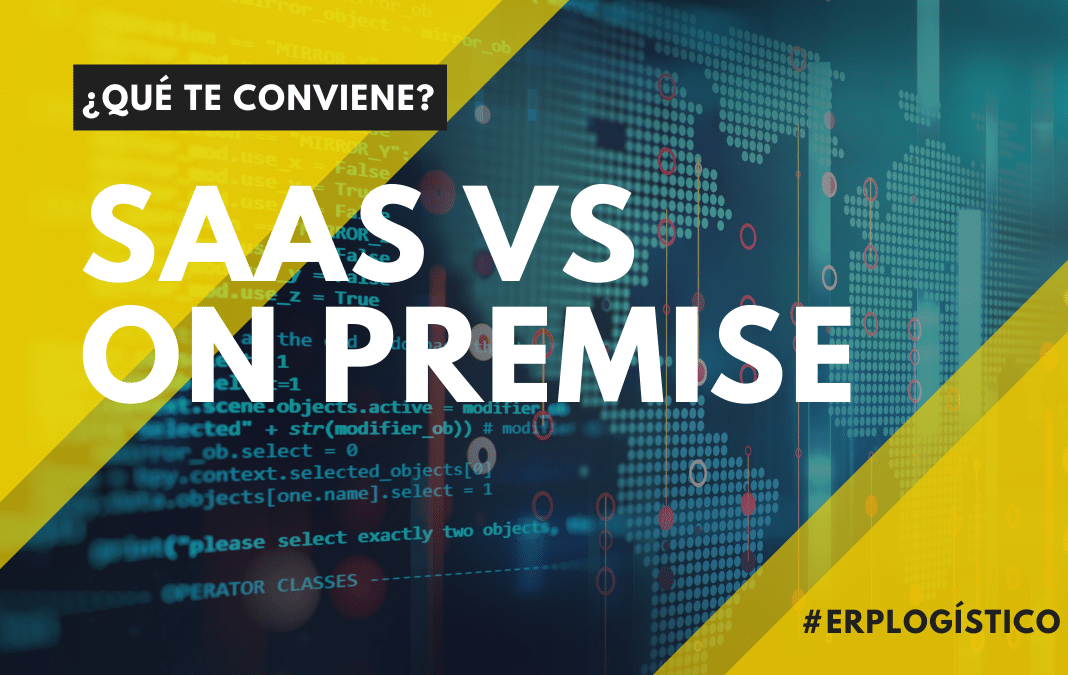Analyzing the advantages, disadvantages and differences between SaaS and On-Premise will be the key to making the best choice for our logistics operations and their digitization.
In this article, we will analyze the differences between the different modalities: SaaS and On-Premise. Implementing the best solution for our business can be a big and overwhelming task for most companies. Knowing the differences, weaknesses and strengths of these, will be essential to overcome the challenge of choosing the option that best suits the operation of our company.
To get to that point, we will clarify some of the crucial factors to consider in terms of Saas and On-Premise implementation.
What is SaaS and On-Premise?
The eternal doubt when you install an ERP, a WMS or any other software with the purpose of simplifying business processes, is whether to keep that solution In House (On-Premise) or In Cloud (SaaS). The choice will determine the way you interact with your processes and the performance you get from the installed software.
- SaaS, which stands for "software as a service", is an application solution hosted and maintained by a third party in the cloud. The Software as a Service modality is the one that most companies tend to move towards nowadays and it implies the possibility of having a software on a timely basis, paying only for it each time it is used.
- On-Premise is a system that is hosted locally on the customer's own system and backed up by a third party to provide assistance in case of problems.
Now we will discuss the essential differences between SaaS and On-Premise in order to make the best choice.
Saas VS. On-Premise, which is the best choice for you?
Nowadays, the configuration option is unlimited thanks to today's IT environment, which has two fundamental structures: On-Premise and SaaS (Cloud). Both have their own advantages and disadvantages. The key differences between these two, are:
Depending on the type of accommodation
The most basic, yet crucial difference is the way in which hosting is performed in both. In SaaS, the application is hosted on the provider's server and accessed through web browsers. While On-Premise, the application is installed locally on the company's or user's computer and servers.
According to budget
Pricing is a decisive factor for many companies and is a clear difference between these two solutions. In the case of SaaS, pricing is governed on a subscription basis and is charged on a monthly, quarterly, semi-annual or annual basis. Whereas On-Premise is generally priced below the SaaS time-bound rate. On-Premise pricing depends on the size of the organizations and the number of units installed.
In this case, we can say that in terms of financing, the SaaS solution is OPEX (Operational Expense) and the On-Premise is CAPEX (Capital Expense).
By type of support and maintenance
Based on this criterion, most users or companies prefer to implement SaaS, since with this solution the total responsibility for solving software application problems falls entirely on the provider. While users who opt for On-Premise, must have an IT department that can solve any fluctuations in the normal behavior of the application.
Depending on access
Whether or not to have immediate access at any time is also a decisive factor. SaaS has an application through which the user can access anytime, anywhere. The only requirement to use it is that you must have a web browser and Wi-Fi. On-Premise, however, has an application that can only be accessed through the company's site. Therefore, users will not be able to connect from anywhere else.
According to software testing needs
An On-Premise application requires regular testing to ensure its correct operation, thus avoiding possible delays and errors. Because of this, with this solution, the need for the service of a tester arises. Whereas in a SaaS environment, this need is eliminated.
According to their security level
It is essential for organizations to have a strategy in place to protect against certain disasters. For On-Premise users, backing up can be a major challenge, as in-house systems can be relatively expensive and may require additional investment, security and licensing. However, SaaS offers a comprehensive advantage, as it can perform a backup of different types: from mere data storage to complete failover, which allows full transfer of functions.
In short, by analyzing these differences, we will be able to choose more strategically the best option to implement in our operations. Whether SaaS or On-Premise, the path is always towards digitization.

Consultant in Logistics and Supply Chain Technologies


